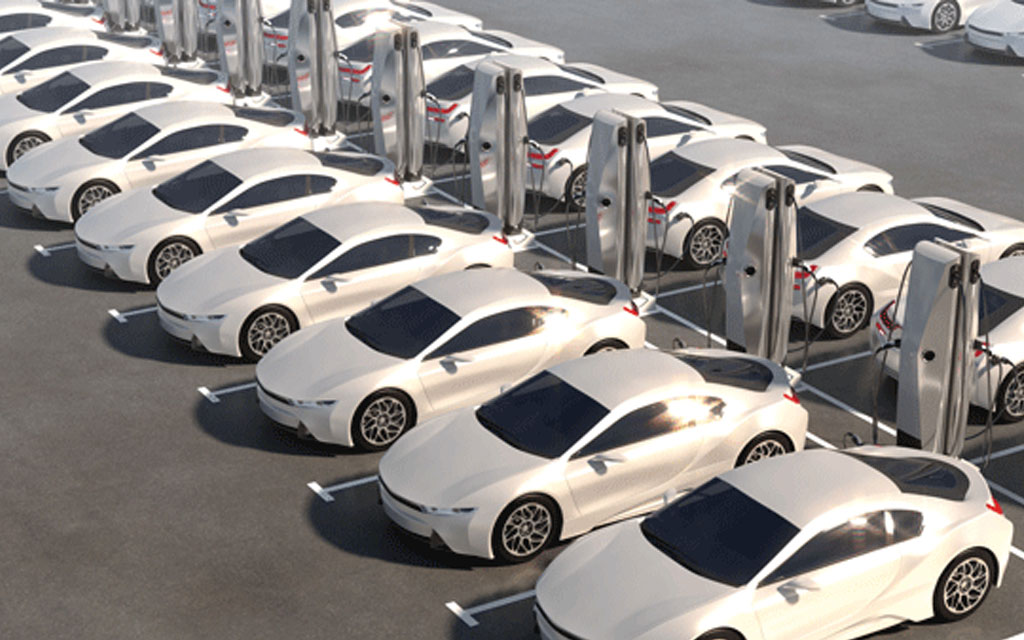Miami’s major airport is getting an upgrade with a new building expected to help meet…

The Rise Of Alternative Assets In The Industrial Sector
Warehouses and logistics and fulfillment centers are mainstays of the industrial asset class. But there are other subcategories within the sector with strong investment cases that are helping support the broader boom in industrial property. What are the emerging niches and what are their investment cases? Here we highlight the three most promising.
INDUSTRIAL OUTDOOR STORAGE
Industrial outdoor storage (IOS) — defined as a site zoned for an industrial use where the tenant can store something outside, such as vehicles, construction equipment, building materials or containers — is one of the hottest commodities in CRE currently.
In a recent Green Street report on the sector, authors Vince Tibone and Jessica Zheng highlighted the “approximately zero net new supply of IOS sites near logistics nodes [and] demand and rent growth for well-located IOS” and predicted these dynamics “should remain robust over time.”
Green Street believes that IOS sites in infill submarkets in particular are priced to deliver risk-adjusted expected returns “that are superior to those available on most other commercial real estate property investments, including traditional industrial.” Net new IOS supply is expected to be close to zero, or marginally positive, in infill submarkets in the coming years.
“On the supply side, it’s very hard in a lot of markets to create new industrial outdoor storage; it has a very, very minimal tax contribution. So cities are reluctant to entitle tax considerations, but also the fact that this is not the prettiest form of real estate. Cities generally don’t want to approve new supply,” says Tibone, managing director at Green Street, where he leads the firm’s U.S. mall and industrial research.
The greatest supply barriers likely exist in Los Angeles, Orange County, and New Jersey, in line with what is seen in traditional industrial markets. Barriers are much lower away from key logistics infrastructure, where likely use case shifts from transportation and logistics and more towards storage of vehicles and other items.
Demand for IOS first exploded in 2021, when the combination of a post-Covid pent-up-demand consumption boom coupled with supply chain disruptions led to an urgent need to store transport equipment and other items. “It’s been a really, really good run for industrial outdoor storage,” Tibone says.
Demand appears to be every bit as strong today, while supply remains limited by the unappealing nature of the sites from an aesthetic as well as tax-contribution perspective. There is also potential to exploit other uses for IOS plots.
“Given that a lot of this land is just raw paved land, owners of this product will realize that there will be opportunities to develop on these sites for better use, whether that’s class A or a more traditional industrial facility,” Tibone says.
Jimmy Ullrich, executive vice president at Colliers in Tampa, warns IOS investment has some vulnerability to a potential freight recession due to its close ties to the trucking industry, which is experiencing a downturn. However, this is mitigated by the diverse nature of its tenants, many of which have demand profiles that are counter-cyclical in nature, he wrote in a recent report.
“Even in the event of a freight recession, there are still plenty of tenants vying for limited supply sites, such as equipment rental businesses and building material suppliers,” he wrote.
Non-trucking IOS tenants include equipment rental, roofing supply, plumbing supply, modular buildings, lumber yards, pipe yards, infrastructure supply, contractor yard, automotive storage and auction sites, among others.
“While some may speculate that a potential freight recession could have a chilling effect on the thriving IOS market, my prediction is that the impact won’t be as harsh as many anticipate. I believe it will likely continue to attract investor attention and deliver impressive returns,” Ullrich concludes.
COLD STORAGE
Cold storage is another niche generating strong interest at the moment, driven by a pandemic-led surge in food and beverage activity. Cold storage warehousing and distribution is expected to grow into a $324 billion market by 2030, according to Acumen Research and Consulting, which is triple the current market size.
Spec developers are now getting involved with cold storage, which historically was rarely happening, and various funds are being raised specifically to develop such properties. A June 2022 report from CBRE calculated a total of 3.3 million square feet of speculative cold storage under development across the country, up from 300,000 square feet in 2019.
“It is a tricky category, since so much of the space is owner occupied and it’s not usually leased or tracked very easily, but food and beverage, especially cold storage, is something I’m very excited about,” says Carolyn Salzer, director and head of industrial research for the Americas at Cushman & Wakefield.* “With the grocery delivery services, meal kits, and those types of things continuing in their popularity, even post pandemic, demand will continue across that segment.”
Respondents to DLA Piper Global Real Estate’s annual survey, released in June 2023, were clear-eyed on the challenges facing the market but when asked about any reasons for optimism, they pointed to demand for industries that serve basic human necessities. That sentiment increased by 17% compared to 2022 to 37% this year. The cold chain’s essential role in the transport of both food and medical supplies stands cold storage in good stead.
In addition to market factors driving high demand, the aging stock of cold buildings is another reason this asset class is attracting the interest of spec developers, according to NAIOP, the commercial real estate development association.
“In the past, cold storage buildings were built to suit, but due to the surge in demand and the need to upgrade these facilities, the era of the speculative cold building could be upon us,” writes Mike Jeitner in the spring 2023 issue of NAIOP’s Development magazine.
SUPPORTING EVS
While electric vehicles are not exactly a niche, EV production as well as manufacturing in general is driving a great deal of new industrial development and is therefore worthy of note. By 2050, EVs could make up about 90% of the car market, according to Morgan Stanley research.
Driven by government incentives and a race among automakers to grab market share, the EV industry is set to fuel demand for industrial real estate for years to come. The U.S. already is experiencing a general, significant uptick in demand for industrial space off the back of increases in e-commerce activity and manufacturing output, which will be exacerbated by the EV boom.
CRE research firm Yardi Matrix predicts that up to 370 million square feet of new space is needed annually in the US to meet industrial demand, totaling 1.8 billion through 2026.
“The coming EV wave will create a plethora of opportunities for industrial real estate developers and investors, especially in the Southeast and Midwest,” according to the firm’s March 2023 National Industrial Report.
It will also transform the sector in other ways, the report notes: Automakers will own their manufacturing plants, but will also require an array of supplemental manufacturers and suppliers nearby, as evidenced by the firms located around Tesla’s EV plants, or gigafactories.
Lack of adequate charging infrastructure is a drag on EV adoption and the real estate industry has a major role to play in filling the void. Although there are an estimated 1.6 million EVs on American roads, only 40,000 charging stations have been registered with the U.S. Department of Energy compared with the 150,000 gas stations in existence.
Landlords are increasingly incorporating EV charging infrastructure into their buildings as part of their sustainability objectives. Industrial developer Clarion Partners has put in more than 348 EV chargers across its properties, as one significant example. Cost is a barrier to the creation of charging stations but the Infrastructure Investment and Jobs Act, and the $7.5 billion it puts towards building up a network of chargers nationwide, may offer a boost.
The caveat is there is a raft of practical issues to confront, apart from cost, when installing charging infrastructure and with both supply and affordability issues threatening to bust the EV bubble, the exact degrees of adoption is uncertain. Before going all in on EV charging, CRE property owners may opt to watch the market and see when manufacturers go all in on product and consumers on purchases.
Indeed, there are some warning signs that EV makers are feeling the strain of production pressures, shown by multiple EV manufacturers cutting their 2023 outlooks, and the rising cost of lithium and other battery minerals is prompting manufacturers to pass on the price rises to consumers — which may create a cooling effect on sales.
What is clear, however, is the ripple effects of EVs on CRE are multi-faceted and will continue to be felt. Additionally, efforts to create stronger domestic supplies of the necessary minerals will have major impacts.
“The commercial real estate industry is really adapting to the new technologies, not only in terms of EVs, but also the supply element that goes along with that with the reshoring for lithium and all the precious metals. There’s a lot of precious metal mining yet to occur probably in the next 10 years,” says Doug Ressler,
“The whole eastern part of Alabama is a prime source based on geologic surveys, that’s going to start really expanding in terms of precious metals that are going to be used in battery manufacturing. This is already beginning,” he says.
Source: https://www.globest.com/








This Post Has 0 Comments